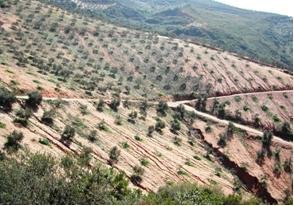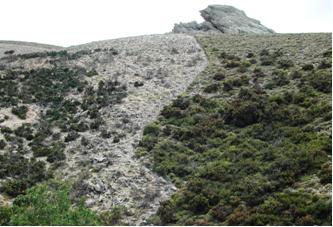|
Stage 4 in the process of linking desertification and land degradation indicators to land use practices
The priority for land users is to apply appropriate land management practices to protect the productivity of sensitive areas to desertification and thus prevent active degradation processes.
A number of indicators have been shown to be important in affecting land degradation processes or causes. Many of the indicators are for properties that cannot easily altered at farm level (such as Soil depth, Slope gradient and Rainfall seasonality). However, indicators related to land management (such as No tillage, Storage of water runoff, and Grazing control) can be changed by the farmer.
A Desertification Risk Assessment Tool has been designed to enable users to
Comparisons of maps of DRI produced from the Assessment Tool with those of degree of land degradation for the same area produced from the WOCAT QM shows that both methods identify the same areas as either having a high DRI or state of degradation. This gives users flexibility in their choice of mapping methods, according to the amount of data they have available to use.
|
|||||||||||||

Acknowledgement
The DESIRE project was
|
DESIRE brought together the expertise of
26 international research institutes
and non-governmental organisations.
This website does not necessarily
represent the opinion of the
European Commission. The European
Commission is not responsible for
any use that might be made of the
information contained herein. 






